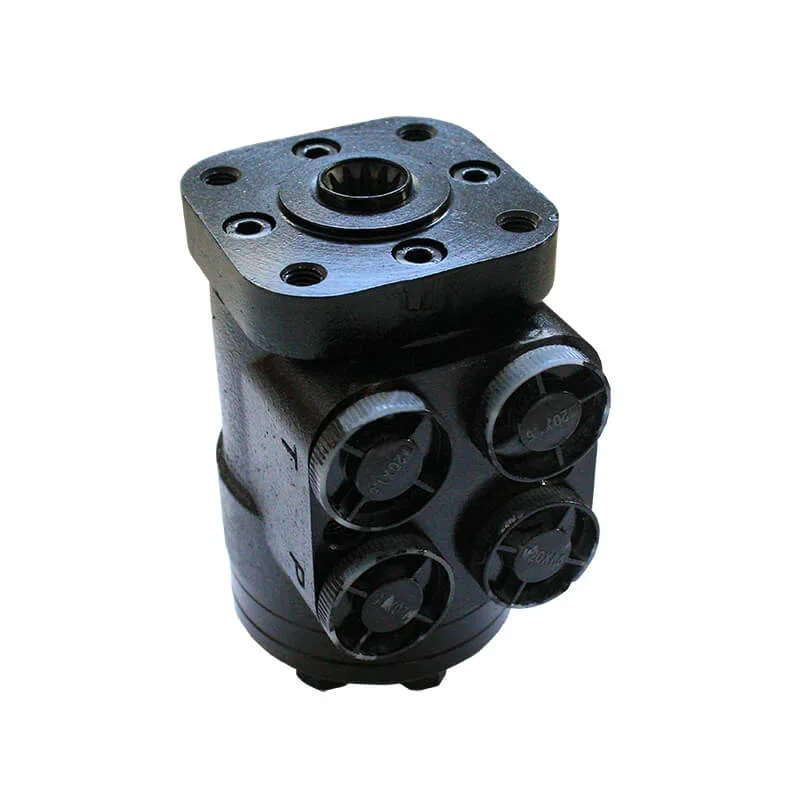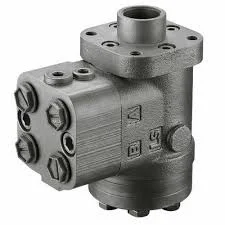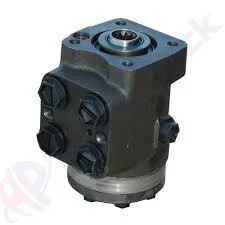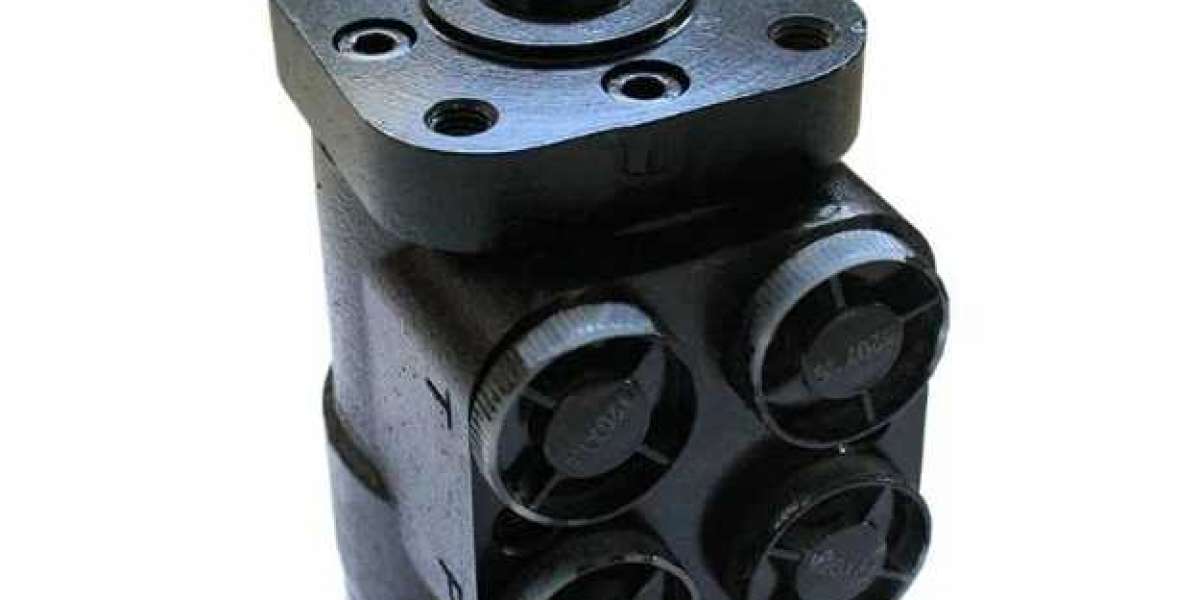Hydraulic steering control units play a crucial role in modern vehicles, ensuring smooth and responsive steering. While most drivers are familiar with the basic concept of hydraulic power steering, understanding the inner workings of hydraulic steering control units can provide valuable insights into their functionality and importance. In this article, we will delve into the components and mechanisms that make up hydraulic steering control units, shedding light on their operation and benefits.
I. The Basics of Hydraulic Steering Control Units
A. Purpose
hydraulic steering control units, also known as power steering control units, are responsible for assisting the driver in turning the vehicle's wheels with minimal effort. They use hydraulic pressure to amplify the force applied by the driver, making steering easier and more responsive.
B. Components of a Hydraulic Steering Control Unit
To understand how hydraulic steering control units work, it's important to familiarize ourselves with their key components:
1. Power Steering Pump
The power steering pump is driven by the engine and generates hydraulic pressure. It draws power from the engine through a belt or, in some modern vehicles, an electric motor. The pump pressurizes the hydraulic fluid and circulates it through the system.
2. Hydraulic Fluid
Hydraulic fluid, also known as power steering fluid, is a specialized oil that transmits pressure within the steering system. It flows through hoses and pipes, delivering power to the steering gearbox and control valve. The fluid also lubricates and cools the system components.
3. Steering Gearbox
The steering gearbox, also called the steering rack, is responsible for converting the hydraulic pressure into physical force that turns the wheels. It consists of a rack and pinion mechanism or a recirculating ball system, depending on the vehicle's design.
4. Control Valve
The control valve regulates the flow of hydraulic fluid based on the driver's input. It determines the amount of assistance provided by the steering system, adjusting the pressure and flow of the fluid accordingly. The control valve is typically located within the steering gearbox.

II. How Hydraulic Steering Control Units Work
A. Powering the System: The Power Steering Pump
The power steering pump is the heart of the hydraulic steering control unit. It draws power from the engine and uses it to generate hydraulic pressure. The pump is either belt-driven or electrically driven, depending on the vehicle's design. As the engine runs, the pump circulates the hydraulic fluid, creating the necessary pressure for the system to function.
1. Belt-Driven vs. Electric Power Steering Pumps
In older vehicles, power steering pumps are typically driven by a belt connected to the engine's crankshaft. The rotation of the belt drives the pump, pressurizing the hydraulic fluid. In contrast, newer vehicles may feature electric power steering pumps that are driven by an electric motor. These pumps provide more precise control over the power steering assistance and are more energy-efficient.
2. Pump Operation and Fluid Circulation
When the engine is running, the power steering pump draws hydraulic fluid from the reservoir and pressurizes it. The pressurized fluid is then directed to the control valve, which determines the amount of assistance required based on the driver's steering input. The control valve regulates the flow of fluid to the steering gearbox, where it exerts force on the rack and pinion or recirculating ball mechanism, turning the wheels.
B. Transmitting Power: Hydraulic Fluid
Hydraulic fluid plays a vital role in transmitting power within the steering system. It is specifically designed to withstand the high pressures and temperatures generated by the power steering pump. The fluid's properties, such as viscosity and temperature resistance, are carefully formulated to ensure optimal performance.
1. Role of Hydraulic Fluid in Power Transmission
As the power steering pump pressurizes the hydraulic fluid, it becomes highly pressurized and capable of transmitting force. The fluid flows through hoses and pipes, carrying the pressure to the control valve and steering gearbox. This pressurized fluid exerts force on the steering mechanism, assisting the driver in turning the wheels with reduced effort.
2. Properties and Importance of Choosing the Right Fluid
Choosing the correct hydraulic fluid is crucial for the proper functioning and longevity of the steering system. The fluid must meet the manufacturer's specifications and be compatible with the system's components. Using the wrong fluid can lead to reduced performance, increased wear, and potential damage to the system.
C. Steering Assistance: The Control Valve
The control valve is a critical component that determines the level of steering assistance provided to the driver. It regulates the flow and pressure of the hydraulic fluid based on the driver's steering input. The control valve is typically integrated within the steering gearbox.
1. Function and Types of Control Valves
The control valve receives input from the driver through the steering wheel. It adjusts the flow of hydraulic fluid to provide the desired level of steering assistance. There are different types of control valves, including rotary valves and spool valves, each with its own mechanism for regulating fluid flow.
2. Pressure Regulation and Steering Assistance Levels
The control valve adjusts the pressure and flow of hydraulic fluid based on the driver's steering input. When the driver turns the steering wheel, the control valve opens or closes specific passages, allowing more or less fluid to flow through the system. This adjustment determines the level of steering assistance provided, ensuring a comfortable and responsive steering experience.
D. Steering Gearbox: Converting Hydraulic Pressure into Steering Force
The steering gearbox, also known as the steering rack, is responsible for converting the hydraulic pressure generated by the control valve into physical force that turns the wheels. The type of steering gearbox used depends on the vehicle's design.
1. Rack and Pinion vs. Recirculating Ball Steering Gearboxes
Most modern vehicles use a rack and pinion steering gearbox. In this system, the control valve directs pressurized fluid to one side or the other of a piston within the steering rack. This piston is connected to a rack that meshes with a pinion gear, converting the hydraulic pressure into linear motion that turns the wheels. In older vehicles, a recirculating ball steering gearbox may be used, which uses a series of ball bearings to transmit the hydraulic pressure to the steering linkage.
2. Gear Ratio and Steering Sensitivity
The steering gearbox also determines the gear ratio, which affects the steering sensitivity and effort required by the driver. A higher gear ratio provides more responsive steering but requires more effort, while a lower gear ratio offers easier steering but may sacrifice some responsiveness. The gear ratio is carefully calibrated to strike a balance between ease of steering and precise control.
III. Benefits of Hydraulic Steering Control Units
A. Improved Steering Precision and Responsiveness
Hydraulic steering control units significantly enhance steering precision and responsiveness. By amplifying the driver's input, these units allow for more accurate control of the vehicle, especially at higher speeds or during sudden maneuvers. The hydraulic assistance provided by the control valve ensures that the steering response is smooth and predictable.
B. Reduced Driver Fatigue and Effort
One of the primary benefits of hydraulic steering control units is the reduction in driver fatigue and effort. By assisting with the physical effort required to turn the wheels, these units make steering easier, particularly in parking lots or tight spaces. Drivers can maneuver their vehicles with minimal effort, reducing strain on their arms and shoulders during long drives.
C. Enhanced Vehicle Safety and Stability
Hydraulic steering control units contribute to vehicle safety and stability. The precise control they offer allows drivers to maintain better control of their vehicles, especially in emergency situations. The assistance provided by the control valve helps to stabilize the vehicle during sudden turns or when encountering road irregularities, ensuring a safer driving experience.
D. Compatibility with Various Vehicle Types
Hydraulic steering control units are versatile and can be adapted to various vehicle types, including passenger cars, trucks, and SUVs. They can handle different weights and sizes, providing consistent steering assistance across a wide range of vehicles. This adaptability makes hydraulic steering control units a popular choice for manufacturers and drivers alike.

IV. Maintenance and Troubleshooting
A. Regular Fluid Checks and Replacements
To ensure the optimal performance of hydraulic steering control units, regular fluid checks and replacements are essential. Over time, the hydraulic fluid may become contaminated or degrade, affecting the system's efficiency. It is recommended to follow the manufacturer's guidelines for fluid replacement intervals and use the recommended fluid type.
B. Common Issues and Possible Solutions
While hydraulic steering control units are generally reliable, they can experience issues that require attention. Here are some common problems and their potential solutions:
1. Fluid Leaks: Leaking hydraulic fluid can result in reduced steering assistance or even complete failure. Inspecting the system for leaks and addressing them promptly is crucial. Leaks can occur at hose connections, seals, or the power steering pump. Repairing or replacing the affected components can resolve the issue.
2. Noisy Steering: Unusual noises, such as squealing or whining, during steering can indicate a problem with the hydraulic steering control unit. It may be caused by low fluid levels, air in the system, or a malfunctioning pump. Checking the fluid level, bleeding the system if necessary, or replacing a faulty pump can resolve the noise issue.
3. Stiff or Loose Steering: Inconsistent or difficult steering can be caused by various factors, including low fluid levels, a worn-out control valve, or a malfunctioning steering gearbox. Checking the fluid level, inspecting the control valve for proper operation, and addressing any worn-out components can help restore smooth and responsive steering.

Conclusion
Hydraulic steering control units are vital components in modern vehicles, providing drivers with effortless and precise steering control. By understanding the inner workings of these units, we can appreciate their role in ensuring a safe and comfortable driving experience. Regular maintenance and prompt troubleshooting are essential to keep hydraulic steering systems in optimal condition. As technology continues to evolve, the future may bring further advancements in hydraulic steering control units, offering even more efficient and advanced steering capabilities.
At Shanghai AJA Technology Co., Ltd., we are committed to providing high-quality products and excellent customer service. Whether you need assistance with hydraulic motor cleaning or any other hydraulic component-related queries, our knowledgeable staff is ready to help.
Welcome to inquiry if you need to know more about hydraulic steering control units details or order wholesale.








